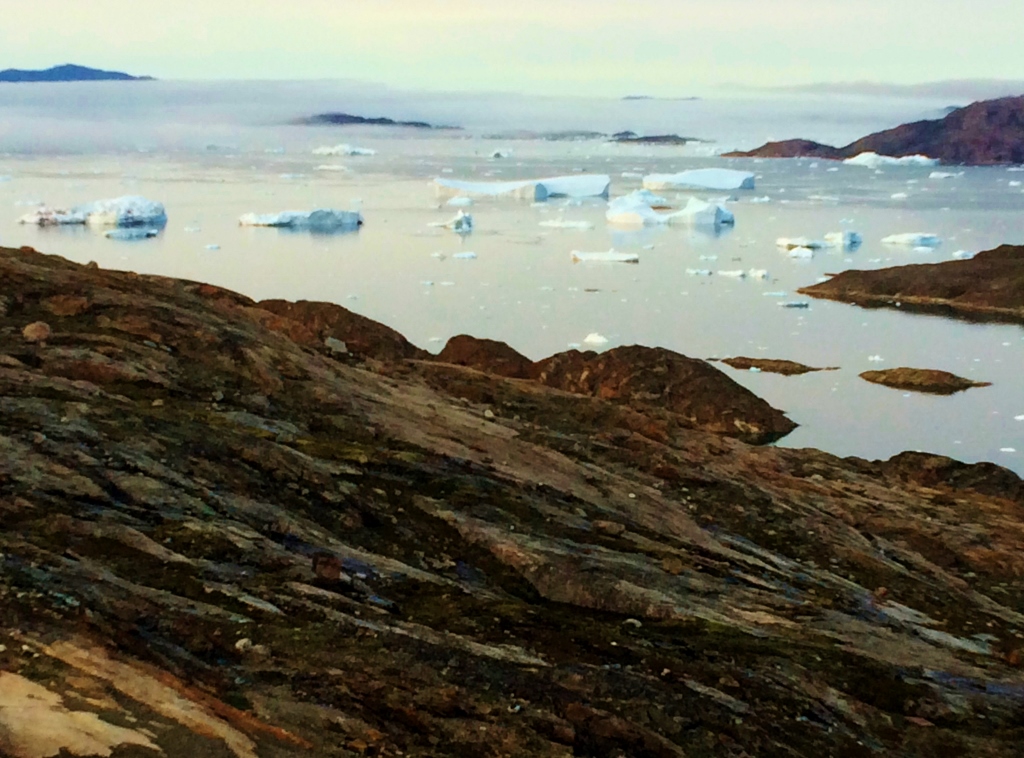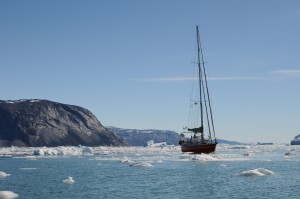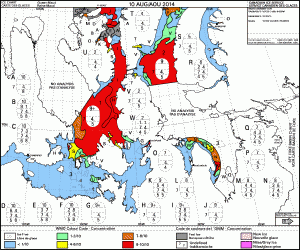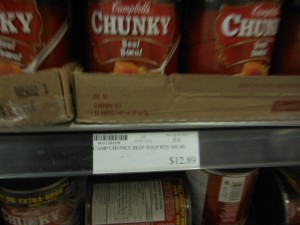http://northwestpassage2014.blogspot.com/2014/10/nwp2014-crewmember-tries-to-answer-how.html
Randall in the Northwest Passage
NWP2014 crewmember tries to answer HOW MUCH, WHAT, WHERE, WHY, NEXT TIME even though he claims to be planning his own NWP attempt... you decide if he should make a solo passage
- - - RE-POST SNIP HTTP://FIGURE8VOYAGE.COM/ONE-BLOGGER-ASKS-RE-THE-NWP/ - - -
ONE BLOGGER ASKS, RE THE NWP…
Posted on October 1, 2014 by Randall in Northwest Passage 2014

Upernavik Fjord. Why Leave Greenland?
A request in the comments of a recent post, “What’s it like to be back?” resulted in a response worthy of its own post.
The requests from Douglas Pohl, who authors Northwest Passage 2014:
“1) Please detail your NWP expenses. 2) If you were to go again – what would you seek out to make the experience better for you a second time? 3) Less than half of the yachts attempting a NWP made goal. What items/events/preparations/decisions made the difference between success and failure?”
My response:
First, a caveat. I’d never been to the high latitude north before this year and went there specifically to learn the weather, pilotage, and endurance challenges associated with my own upcoming attempt. I just got lucky to land a crew spot with Les and Ali on Arctic Tern, who brought a tough boat and an anchor locker full of experience to the problem. It is they who should be answering these questions.
Understanding that…starting from back to front…
3) What items/events/preparations/decisions made the difference between success and failure?
I think the main challenge of any expedition, beyond exploring deeply, is to return home with vessel and crew in one piece. So, I have nothing but respect for the skippers who, after spending weeks on the NWP, decided the risks were too great to continue. We go to rugged places to see life in the raw and to choose for ourselves how to solve their problems. Deciding to retreat from the arctic is no cakewalk given late season weather in Baffin and Davis and can be an adventure in itself. So cudos to all who attempted and got out safely.
Given that, my responses are as follows (not necessarily in this order):
a. A Metal Boat. Many have demonstrated that a metal boat is not a requisite hull material for the NWP. Cloud Nine, Fiona, Saint Brenden, Belzebub, Dodo, Gitana, just to name a few made in glass. While in Nome I met Roland, who manages the yard where you will haul out on your way south, if such is your choice. He went through the NWP in a wooden Bristol Channel Cutter in 2009, demonstrating again that pretty much any boat can do pretty much anything.

Arctic Tern is a Bruce Roberts 43 made of steel.
That said, having the reserve strength of metal in the hull gives your NWP crew the confidence to take the risks an ice passage can require. Arctic Tern was swept off her anchor by heavy ice at Fury Beach and punched through ice plugs in Bellot, Depot and Levesque. We had many concerns during these events—holing the boat was not one of them.
b. Access to Ice Reports. One boat’s crew we knew turned back because they didn’t have daily access to Environment Canada Ice Reports. Arctic Tern benefited from the help of a shore-based monitor, not an arctic expert, rather a computer-handy friend who could clip those portions of the ice reports we needed and compress them for daily send over SSB/Pactor. Other boats with Iridium technology got better, prettier pictures (at sometimes much greater cost), but our snippets were plenty to allow us to make the decisions we needed.

A full color report. What we got was a tiny snippet of this, but good enough!
c. Good at Playing Poker. Success at the NWP in 2014 required waiting, almost endlessly, for the right moments and aggressively taking the opportunities when they came. I got to learn from Les here, who pushed Arctic Tern to the edge of the pack (from Graham to Port Leopold then to Fury and Fort Ross, for example) so that when ice did shift we were in position to take advantage of it.
d. Confidence of Experience (but not overconfidence). Les and Ali had the advantage of significant high latitude experience and the lessons from their 2013 attempt, making them, in my book, the best bet in the 2014 field. That said, Les spent hours with the ice charts, forecasts and the Arctic Pilot. Reading, thinking, reassessing his plan. Always reassessing his plan! This gave us a huge advantage.
2) If you were to go again – what would you seek out to make the experience better for you a second time?
a. Delay a Baffin Crossing. We crossed over too early. We knew this and did it on purpose because early ice charts showed considerable clearing in Pond and further on. There was, we thought, the chance for a repeat of blue-water years like 2012. This turned out not to be, and so we got to fully explore Devon and Arctic Bay in exchange for Greenland north of Upernavik. Not the worst of exchanges, but … OH Greenland … how we missed you!
b. Beyond that, it’s a tough question. We had good food, fresh bread, a heated cabin, arctic streams to drink from, heavy ground tackle, a solid boat, a strong engine, a big gun, two inflatable dinghies, good companions, access to weather and ice reports, and the ability to communicate with home. All on a 43 foot boat!
1) Please detail your NWP expenses.
Again, I was one of several crew, so did not have access to the boat’s overall expedition expenses. From my observations, the biggest expenses on the NWP are a) fuel and b) food.
By my estimation, we motored or motor-sailed some 70% of the time, and we refueled in Nuuk (Arctic Tern began her attempt from Newfoundland), Upernavik, Arctic Bay, Cambridge Bay and Tuk. Given the distances and fickle winds, a sail-only passage was not an option and carrying large fuel supplies, 1000 liters, added greatly to our ability to efficiently get through.
Food in the Arctic is expensive and the selection is poor. Stocking up early, say, in Nuuk, is recommended. I found cans of stew in Arctic Bay that were $12.89. Overall prices for grocery store items appeared to be twice that of “normal” stateside and fresh vegetables often appeared way past “sell by” dates.

Food can be expensive in the north.
For crew traveling to meet a boat, plane flight expenses were considerable. Getting to Nuuk from my home in California was several thousands of dollars.
Other expenses were nominal: no marina fees, no expensive dinners in restaurants and bars, both of which are in short supply in the arctic, etc.

 Roald Amundsen Quotes
Roald Amundsen QuotesRoald Amundsen
“Adventure is just bad planning.”
“I may say that this is the greatest factor: the way in which the expedition is equipped, the way in which every difficulty is foreseen, and precautions taken for meeting or avoiding it. Victory awaits him who has everything in order, luck, people call it. Defeat is certain for him who has neglected to take the necessary precautions in time, this is called bad luck.”
― Roald Amundsen
Posted 1st October 2014 by Voyage Adviser


3
View comments

Voyage Adviser October 2, 2014 at 8:30 AM
Thanks Randall for taking a stab at the questions but thought you might answer the questions and not give the obvious boilerplate reflections or a bogus caveat - no need to hedge - you were there - maybe you need more time to decompress - take your time and reflect on what has happened - you mention your future Figure-8-Voyage cruising plans - but after having been there in the Arctic you don't seem to realize why ARCTIC TERN that you crewed on made it through - it wasn't the steel yacht or the ice charts - they were just tools in the hands of the captains - what were the keys?. Let's see if you can move beyond a crewman (what goes on around you) and become a captain in training (how are things made to happen)... 30 vessels departed ports intending a NWP but only 9 vessels completed the voyage of which two were commercial ships so the remaining 7 were small craft yachts. Seven more vessels are wintering over - 2 of those 7 vessels will end up spending two years in the Arctic wintering over - some think they have completed the Passage - but they have not crossed the Arctic Circle - yet. The point is when you challenge the NW Passage are you only attempting to complete the Passage between Arctic Circles or is there much more... I don't expect everyone to make the realization - on a personal level - was it luck or was it just preparation? Did it involve personal growth steps forward? After 30 years at sea and now from five-years of supporting mariners through the NW Passage - I've come to see much more than even the persons who completed the Passage realize. I would urge you to read Arctic Dreams by Barry Lopez - he truly has exception insight into the Arctic. I hope you attempt to amplify on your answers/realizations. Standing by!

Anonymous October 2, 2014 at 6:37 PM
Captain this guy is a bit thick and can only see the obvious - steel, ice etc - its obvious which of the three.

Voyage Adviser October 2, 2014 at 7:25 PM
I was trying to move him along a few steps. What obviously happens whenever someone experiences an extensive experience they fail to grasp even half of it the first time. I think of my lifetime passion of flying like when I get to fly a new type of aircraft - you take as much as you can in - but are lucky to have quantified 50% of the experience - the next time another 50% meaning now you are up to 75% then after another experience you reach 87% then another time and are now near processing 95% of the experience... I think a NWP similar for many of today's yachters - the experience is so dramatic that they only process a small fraction of the experience because they have never been there - seen the Arctic ice... etc. That is also why I recommended he not consider a solo voyage.. to much too fast without decades more experiences.